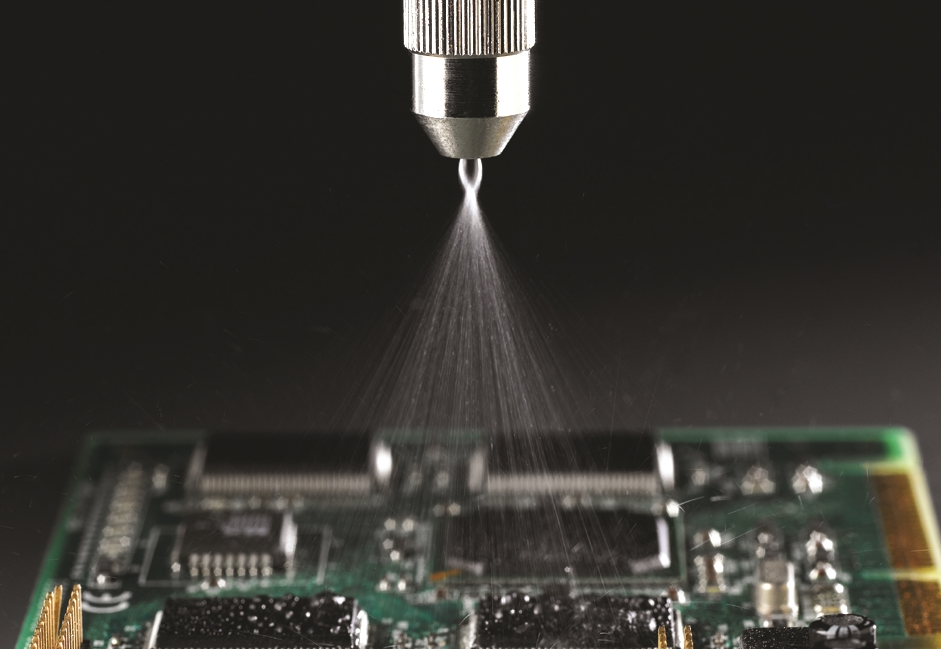Conformal Coatings
What are Conformal Coatings?
Conformal coatings are protective coatings that conform to the surface of a printed circuit board or other electronics package. Generally 25-250 μm thick, they are engineered to protect from moisture, abrasion, chemical, and environmental damage.
Through application processes such as vapor deposition, spraying, brushing or dipping, these coatings conform to the profile of a printed circuit board and seal its components.
Most conformal coatings are transparent. Others contain a fluorescing dye that illuminates under UV light during an inspection. This ensures the coating fully encapsulates the assembly without voids, bubbles, or pinholes.
Types of Conformal Coatings
There are 5 major types of conformal coatings on the market today, differentiated by their base polymer chemistry, strengths, and cure method.
A 6th type of chemistry is a relative newcomer, the so-called nano conformal coatings.
Here fluorine-containing materials are put into a vacuum deposition chamber along with a part to be coated. The fluorine-containing material is then deposited on, theoretically every surface of the part, interior, and exterior providing a nanometer thick protection from water, chemicals, etc.
Application Methods
Acrylic
Spraying
Dipping
Brushing
Epoxy
Spraying
Dipping
Brushing
Polyurethane
Spraying
Dipping
Brushing
Silicone
Spraying
Dipping
Brushing
Paralene
Vapor
Deposition
Advantages
Acrylic
Ease of rework
Simple drying process
Good moisture resistance
Epoxy
Relatively HI temp
High hardness
Abrasion resistance
Low CTE
Higher Tg
Polyurethane
Good dielectric properties
Good moisture resistance
Solvent resistance
Less reversion potential
Abrasion resistance
Silicone
Hi and Low temp performance
Flexible
Good moisture resistance
High dielectric strength
Hydrophobic
Paralene
Excellent uniformity
Chemical inertness
Low outgassing
Low dielectric constant
Hydrophobic grades
NS 605 Conformal Coatings for LED Applications
NanoSlic’s unique hybrid formula offers a significant advance in conformal coating performance.

The key to NanoSlic’s proprietary formula is the nanometer-thick hydrophobic and oleophobic outer shell. NanoSlic utilizes a ceramic platform chemistry meant to withstand some of the harshest environmental factors.
NanoSlic’s essential layer of protection provides a permanent waterproof nanocoating designed to protect your against water, oil, chemical corrosion and abrasion through its outstanding hardness, modulus, and flexibility.
NanoSlic has surface contact angle of 107°/water and 64°/n-hexadecane, causing water and organic based materials to bead up and roll off. This results in a low energy, slippery surface that reduces drag, friction, and heat build-up.
As the coating dries, highly non-polar molecules align and form the surface. Immediately below, the solvent polymerizes into an inert silica-based structure. On the surface of the printed circuit board, the polymer chemically bonds to the hydroxyl groups. As a result, the dual-layer nature of NanoSlic results in both a high degree of adhesion and protection.
The protective coating improves the performance and durability of industrial surfaces. The anti-corrosion properties of offers protection from moisture, oxidation, rust, and many other environmental elements. The high adhesion ensures complete and permanent coverage.
